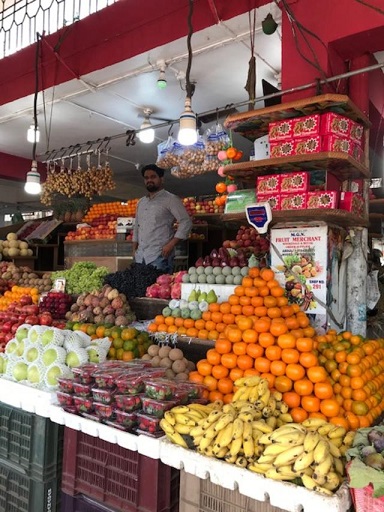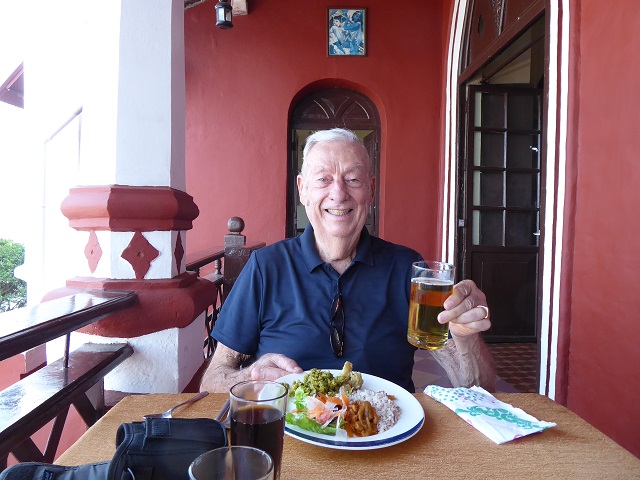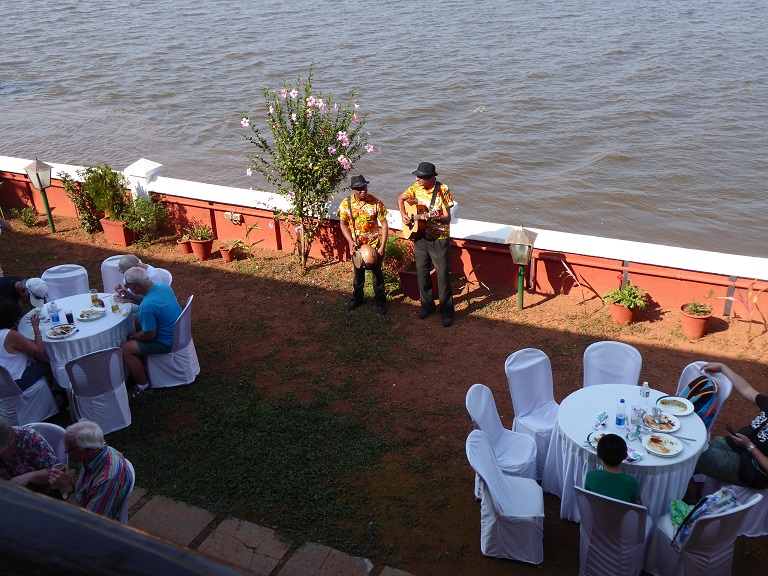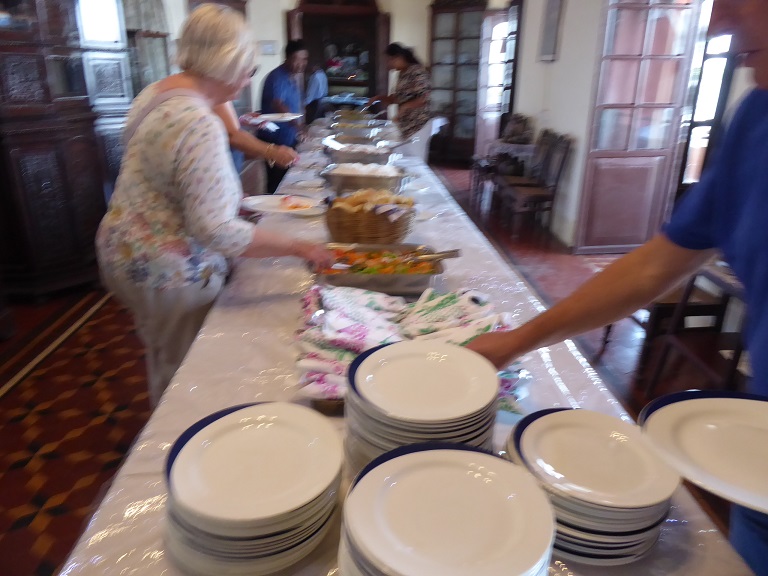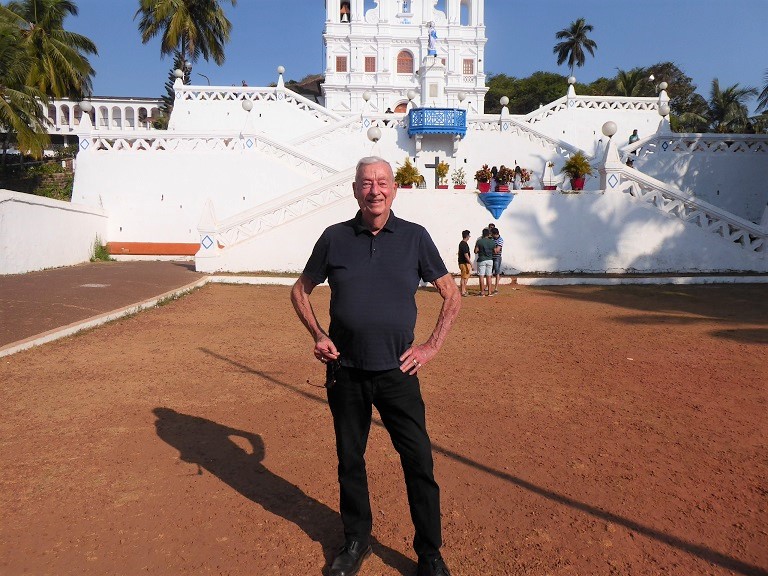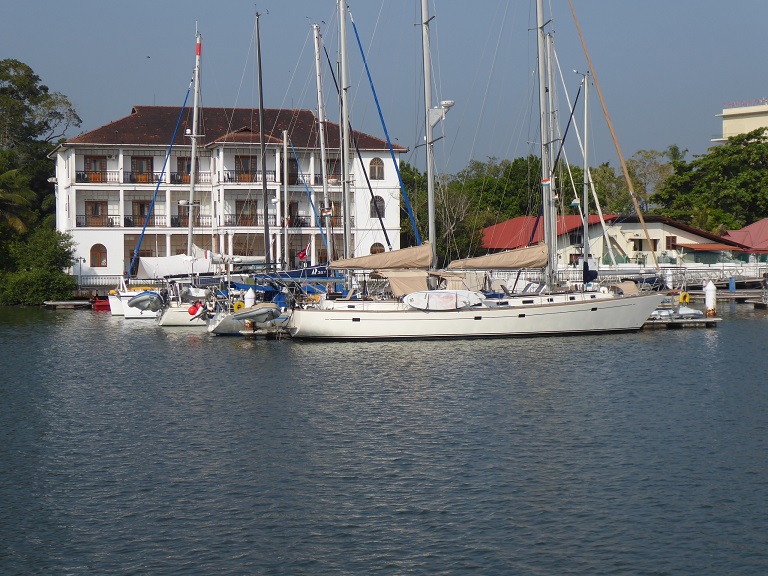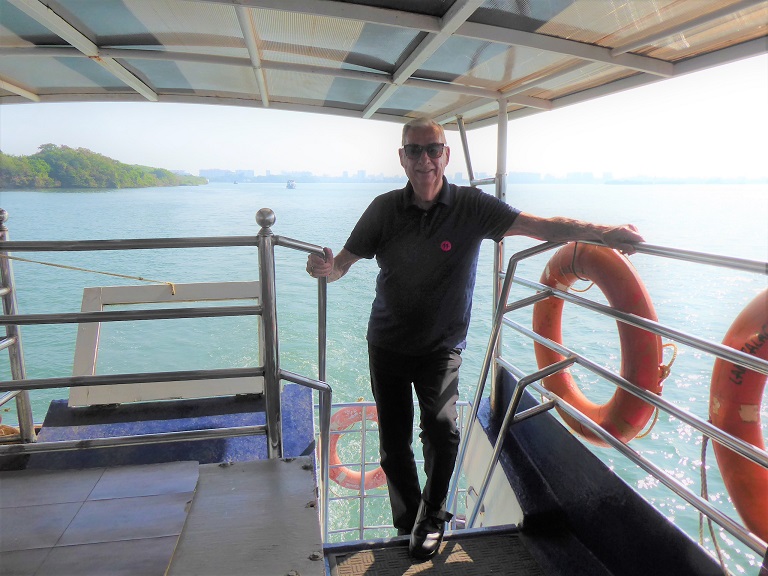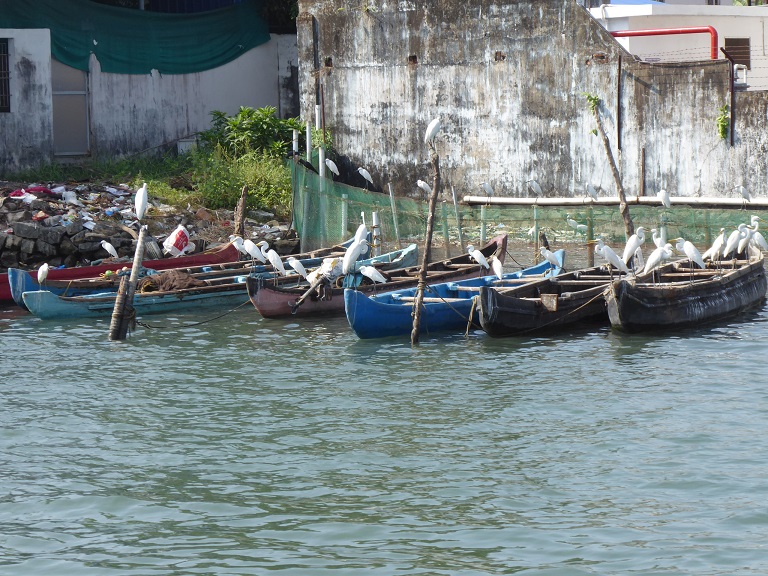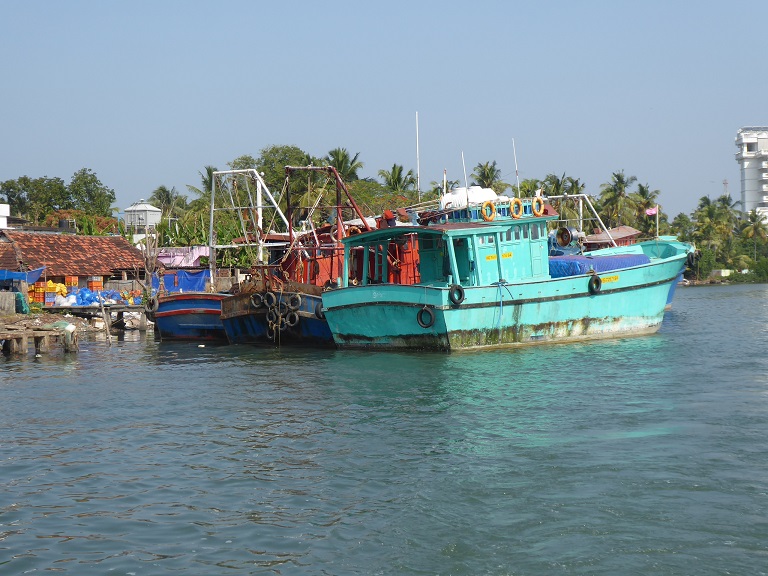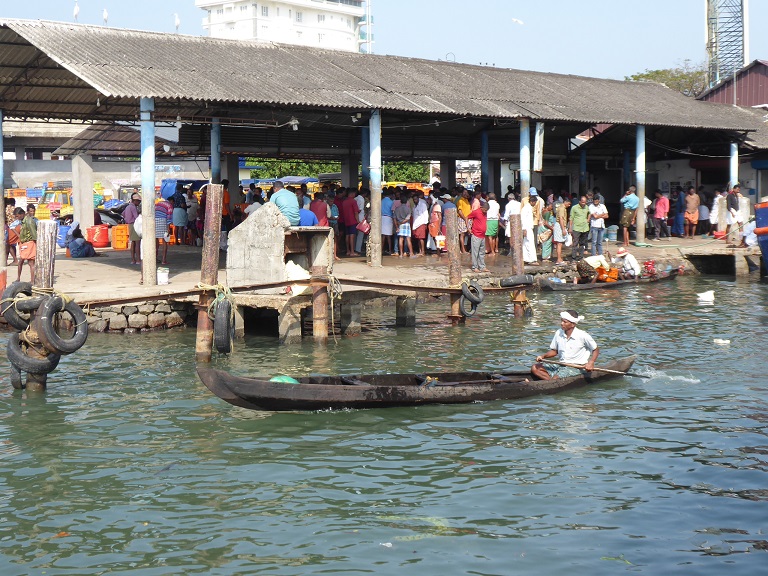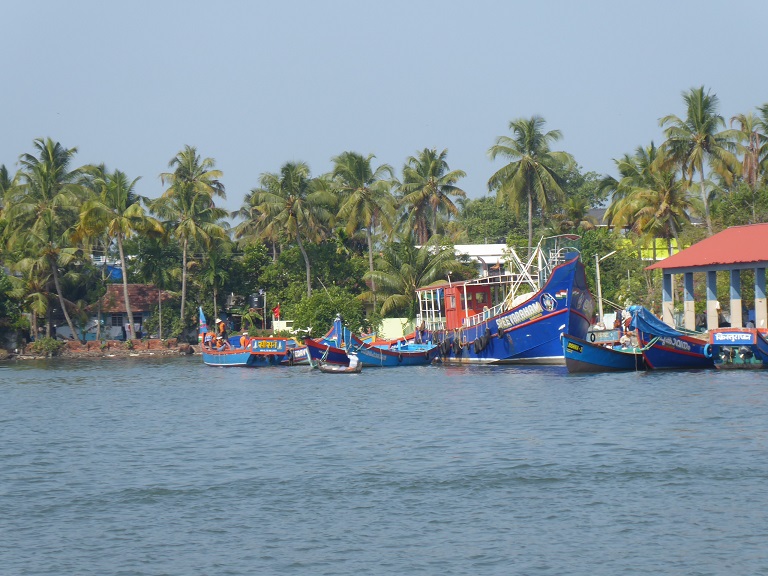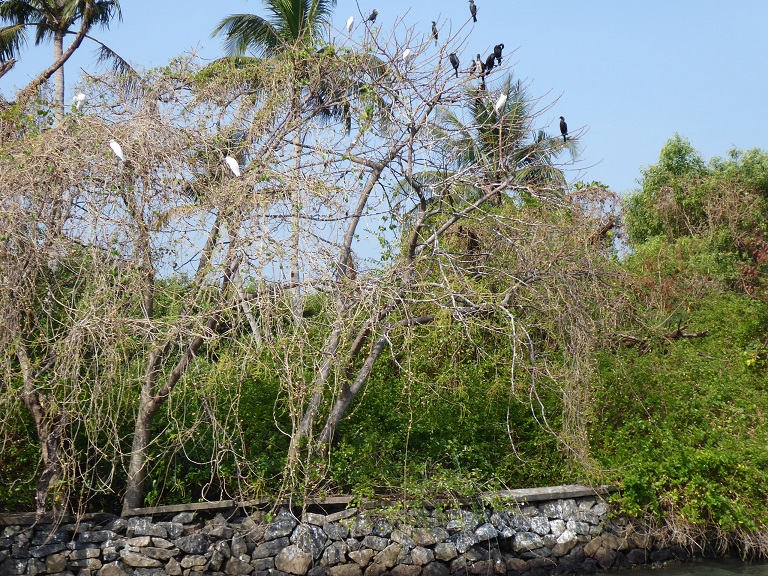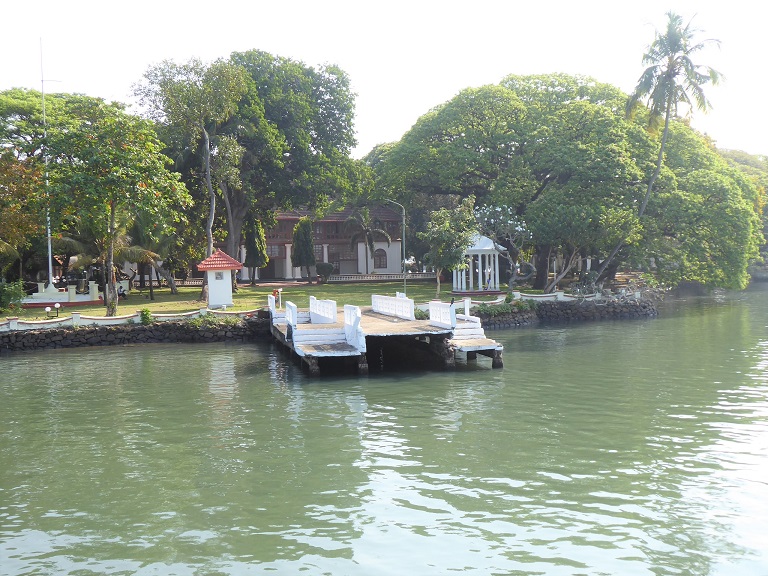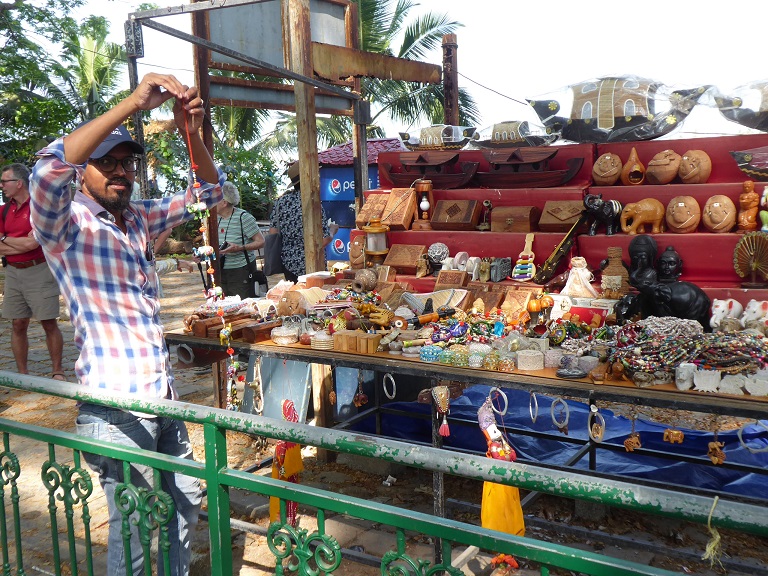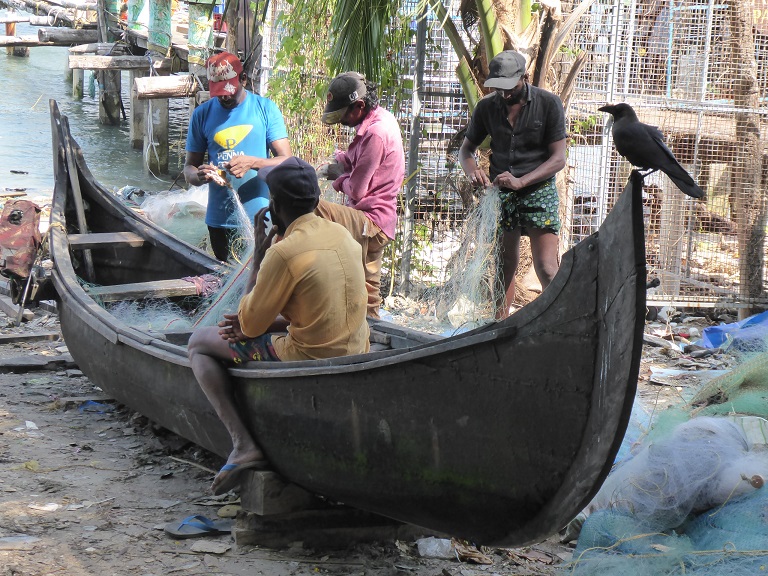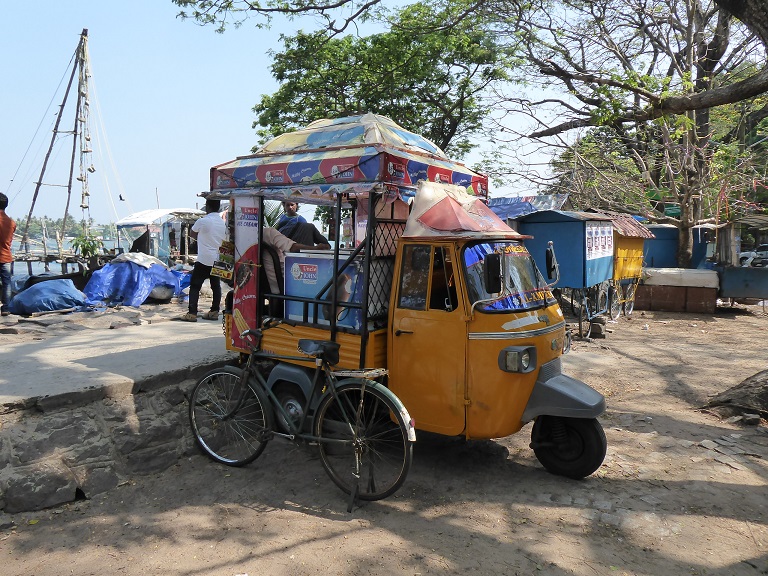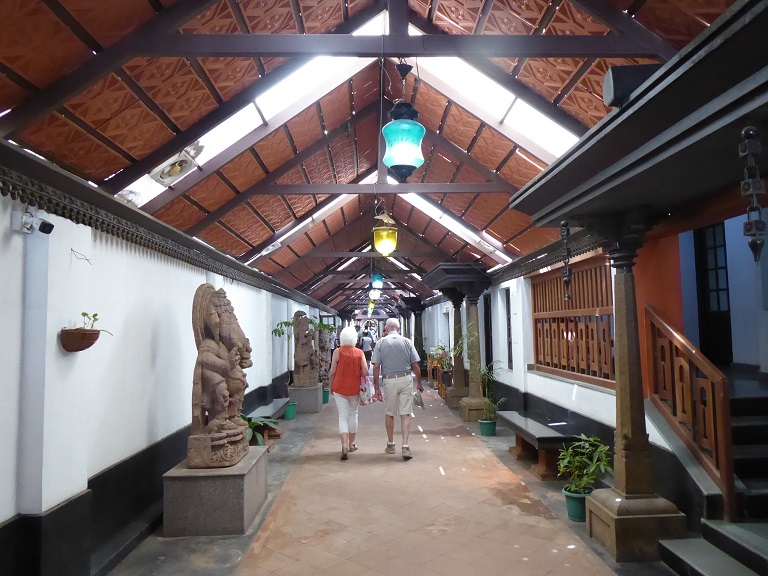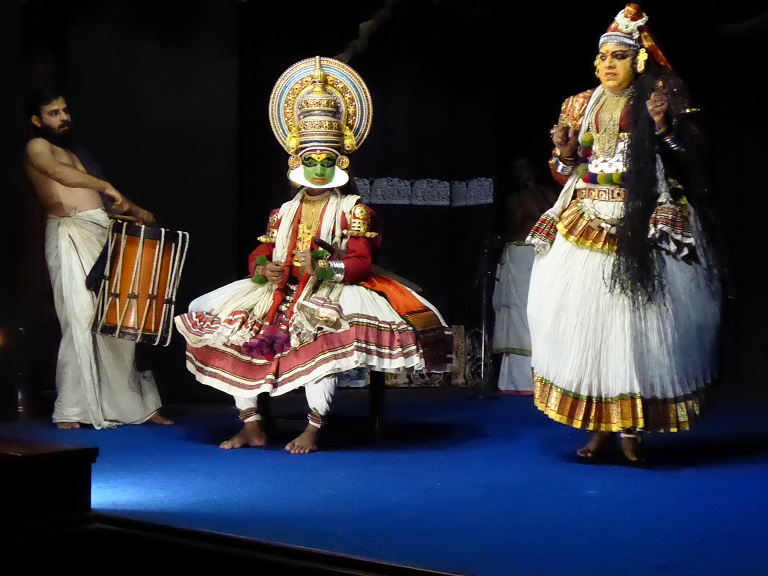|
My Personal Travel Agent - Setting up trips to Morocco, Portugal, Sicily and many other destinations. A top Travel Consultant.
|
I met Viviane in 1999, sailing from Southern Chile to Southern Argentina and visiting Patagonia in April. We celebrated the Millenium New Year in Vienna in 2000 and the actual New Year of 2001 in Morocco! She can plan great trips for you with years of unique travels under her belt!

About ten years ago my travel agent heard I might want to go to India and one day I opened the mail and there was a present for me from Beverly Hills! What was it? Elephants! Viviane told me she thought since I had ridden a camel but not an elephant, she would send an elephant just in case! Well I will be in India but who knows about riding an elephant?
Personnal Travel Agent........
You'll agree that Mumbai is marvelous after seeing highlights including its rich museums, ritzy seaside promenade and unique laundry service. Begin at Gateway of India, then Prince of Wales Museum, which displays Mughal Empire jade work and weapons. Then travel along Marine Drive, Mumbai's seaside promenade to Mani Bhavan, Gandhi's Bombay base between 1917 and 1934, now an outstanding museum. The dhobi ghats will impress you, along with a beautiful railway station inspired by St. Pancras Station in London.
|
Day 6 - Royal Gate and Taj Hotel
|
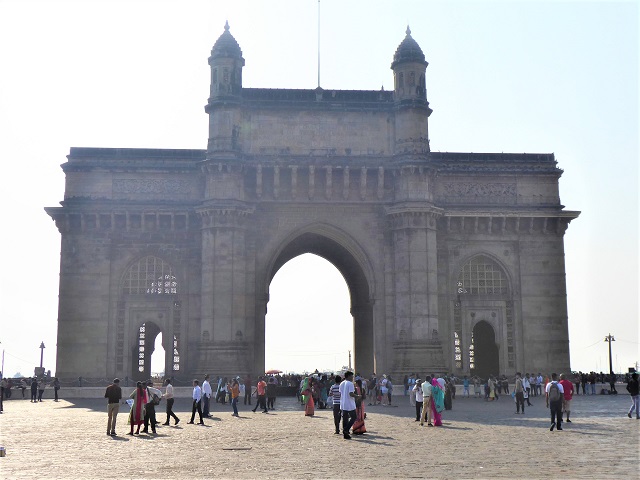
|

|
Gateway of India:
This an arch-monument was built in the early twentieth century in the city of Mumbai, in the Indian state of Maharashtra. It was erected to commemorate the landing in December 1911 at Apollo Bunder, Mumbai (then Bombay) of King-Emperor George V and Queen-Empress Mary, the first British monarch to visit India. At the time of the royal visit, the gateway was not yet built, and a cardboard structure greeted the monarch. The foundation stone was laid in March 1913 for a monument built in the Indo-Saracenic style, incorporating elements of 16th-century Marathi architecture. The final design of the monument by architect George Wittet was sanctioned only in 1914, and construction was completed in 1924. The structure is a triumphal arch made of basalt, which is 26 metres (85 feet) high.
Taj Mahal Palace: Jamsetji Nusserwanji Tata, founder of the Tata Group, opened the Taj Mahal Palace, a hotel in Mumbai (formerly called Bombay) overlooking the Arabian Sea, on 16 December 1903. It was the first Taj property and the first Taj hotel. There are several anecdotal stories about why Tata opened the Taj hotel. According to a story, he decided to open the hotel after an incident involving racial discrimination at the Watson's Hotel in Mumbai, where he was refused entry as the hotel permitted only Europeans. Hotels that accepted only European guests were very common across British India then. According to another story, he opened the hotel when one of his friends expressed disgust over the hotels that were present in Bombay then. But a more plausible reason was advanced by Lovat Fraser, a close friend of the Tata and one of the early directors of the IHCL group, that the idea had long been in his mind and that he had made a study on the subject. He did not have any desire to own a hotel but he wanted to attract people to India and to improve Bombay. It is said that Jamsetji Tata had travelled to places like London, Paris, Berlin, and Düsseldorf to arrange for materials and pieces of art, furniture and other interior decor for his hotel. The Taj group has since then developed and flourished, under the Tata Group.
|
Day 6 - Street Views - Daily Life - Selling and Buying
|
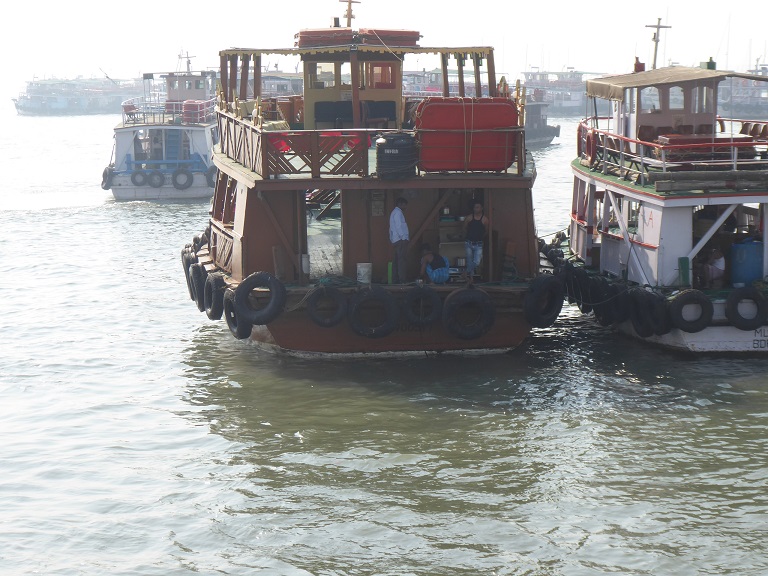
|
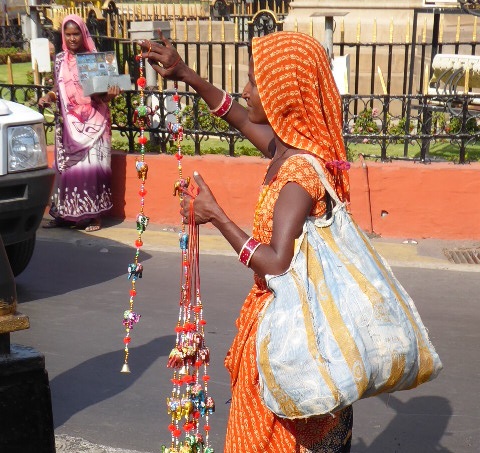
|
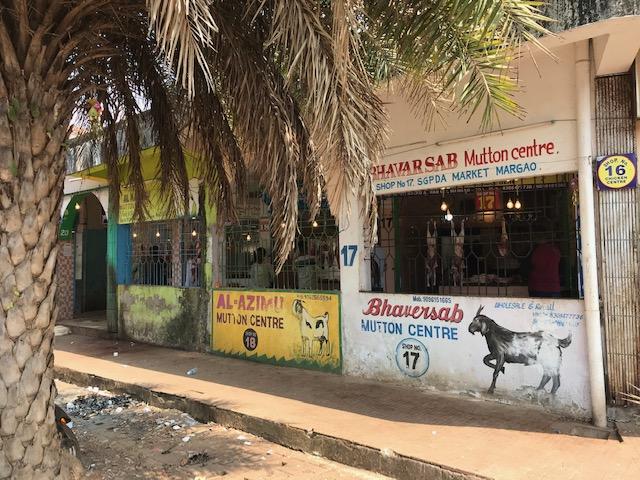
|
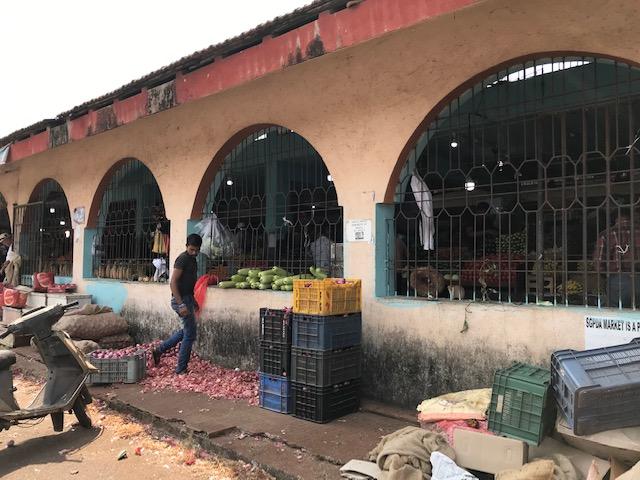
|
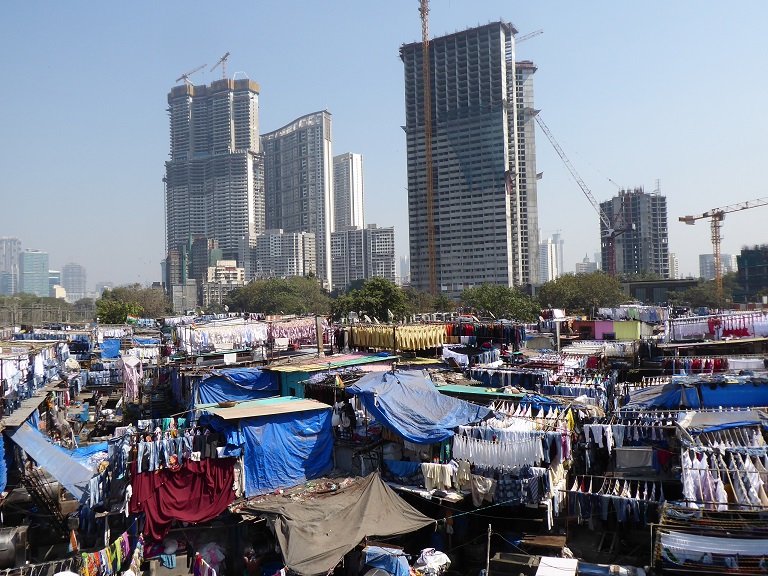
|
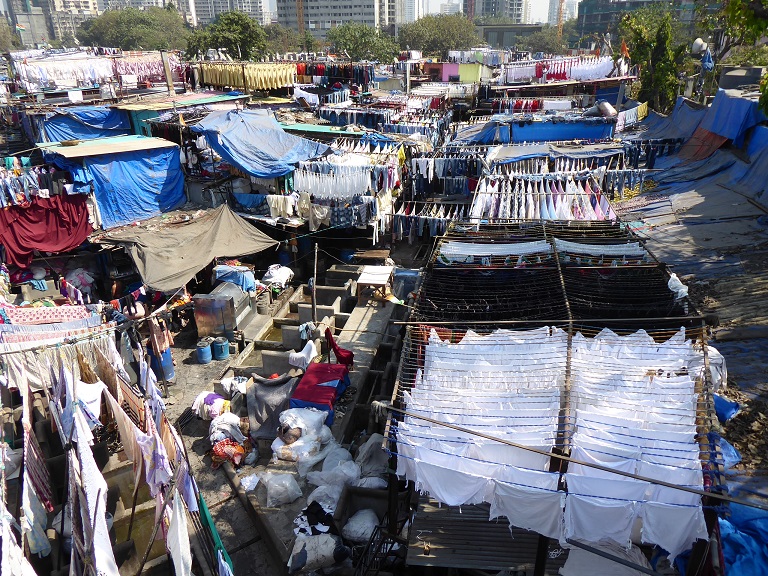
|
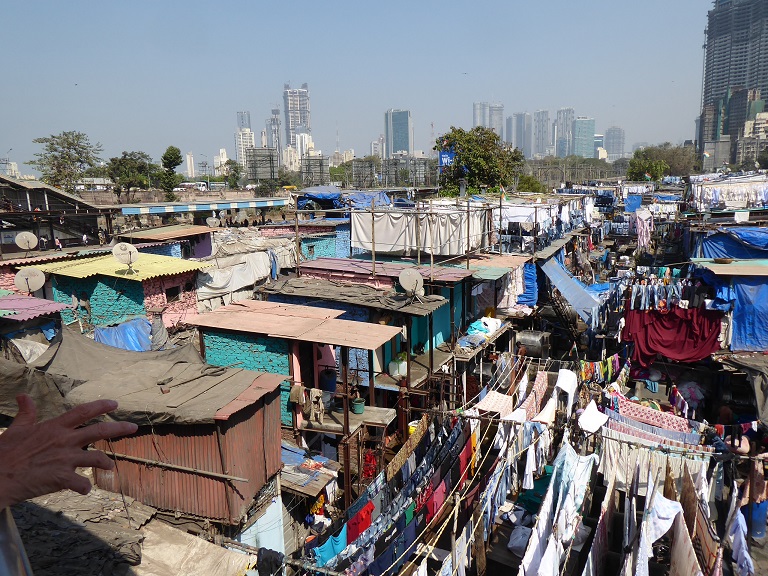
|
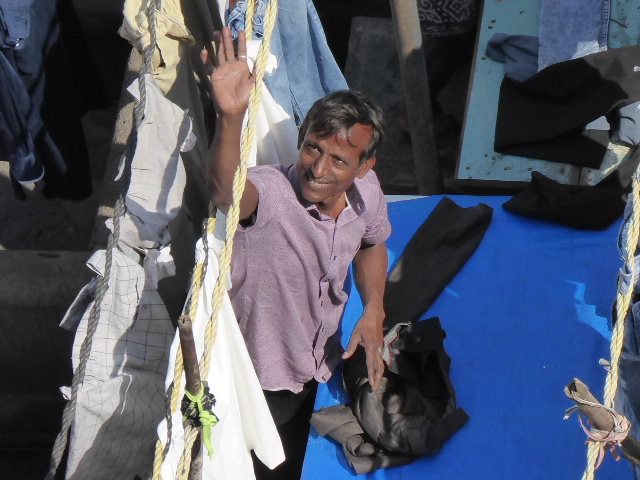
|
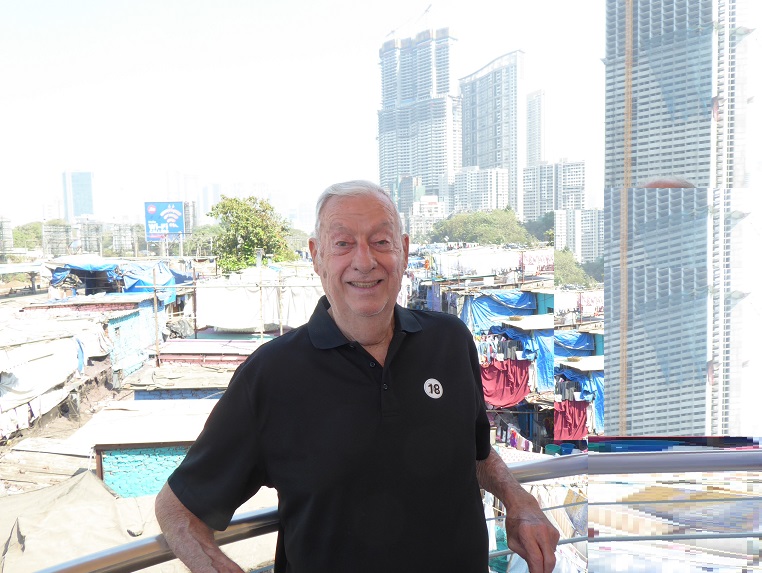
|
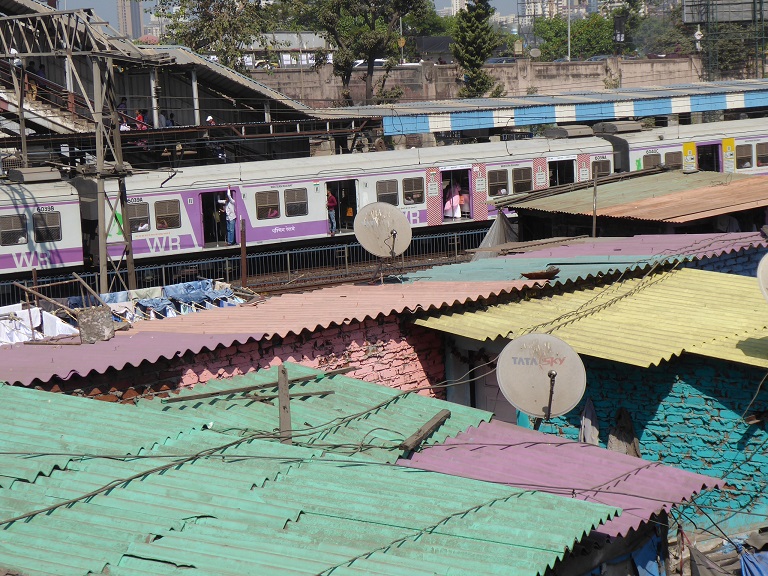
|
Dhobi Ghat: there are rows of open-air concrete wash pens, each fitted with its own flogging stone. Called the world's largest outdoor laundry, Dhobi Ghat is a very popular attraction among foreign tourists.
The word Dhobi Ghat is used all over India to refer to any place where many washers are present.
It was located next to Mahalaxmi railway station on the Western Railway's Saat Rasta roundabout. It can be easily seen from the flyover bridge of Mahalaxmi station.
The Dhobi Kalyan & Audhyogik Vikas Cooperative Society, the apex body that represents washermen, estimates the annual turnover of the Mahalaxmi Dhobi Ghat at around Rs 100 crore. For 18 to 20 hours each day, over 7,000 people flog, scrub, dye and bleach clothes on concrete wash pens, dry them on ropes, neatly press them and transport the garments to different parts of the city. Over one lakh clothes are washed each day. Some of the wealthier dhobis have given up on manual cleaning and have now installed large mechanical washing and drying machines. The dhobis collect clothes from all corners of the city, from Colaba to Virar. Their biggest clients are neighbourhood laundries, garment dealers, wedding decorators and caterers, and mid-sized hotels and clubs.
Dhobi Ghat garnered a Guinness Book of World Records entry under ‘most people hand-washing clothes at a single location’ in 2011. In 2013, World Records India and World Amazing Records honoured World Record Certificate to Dhobi Kalyan & Audhyogik Vikas Co – op.
Western Railway's Saat Rasta : We were told the city has over 25 million people in it and 9 Million workers a day use the trains to get to work. Eventaully the trains had to have twice as many cars but the station could only handle the first half of the train, then the train had to advance so the second half could get off! Eventually they extended the platform so all the passengers could get off at the same time!
|
Day 6 - Mani Bhavan Gandhi Sangrahalaya Museum
|
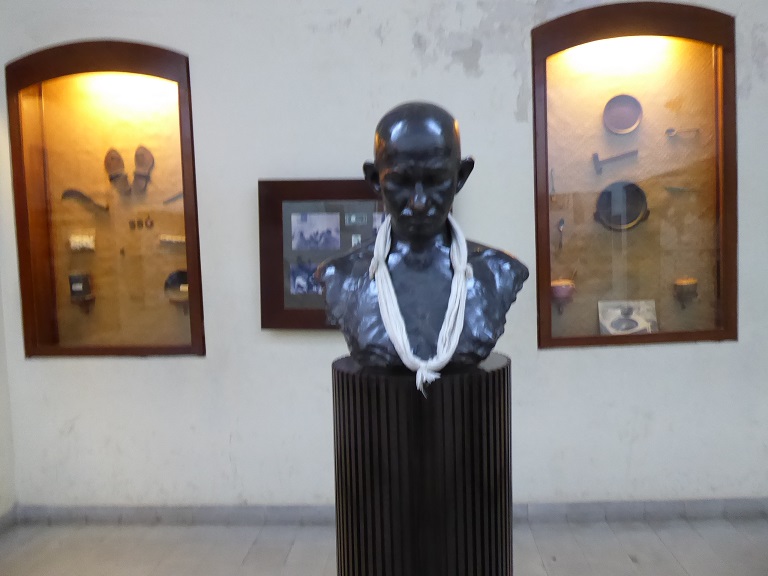
|

|
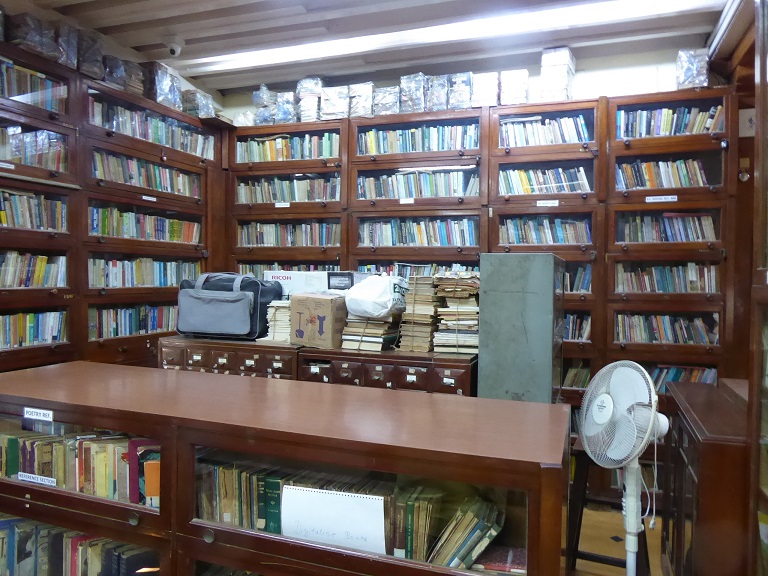
|
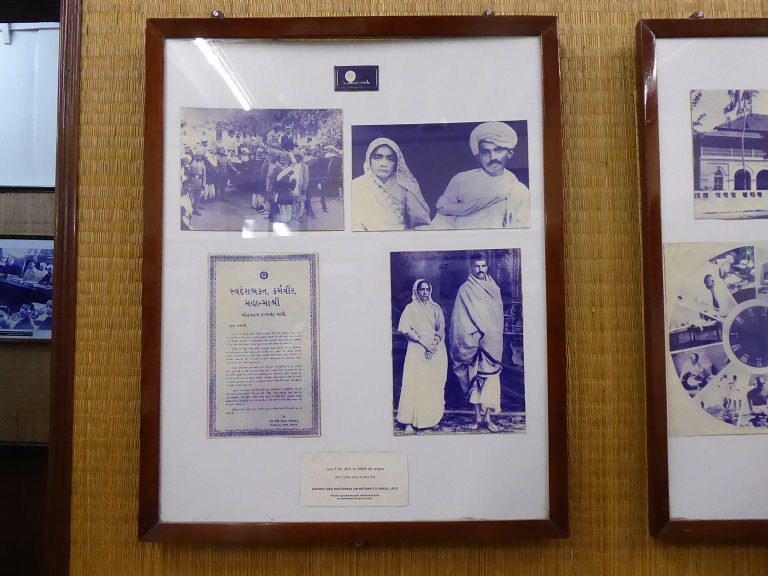
|
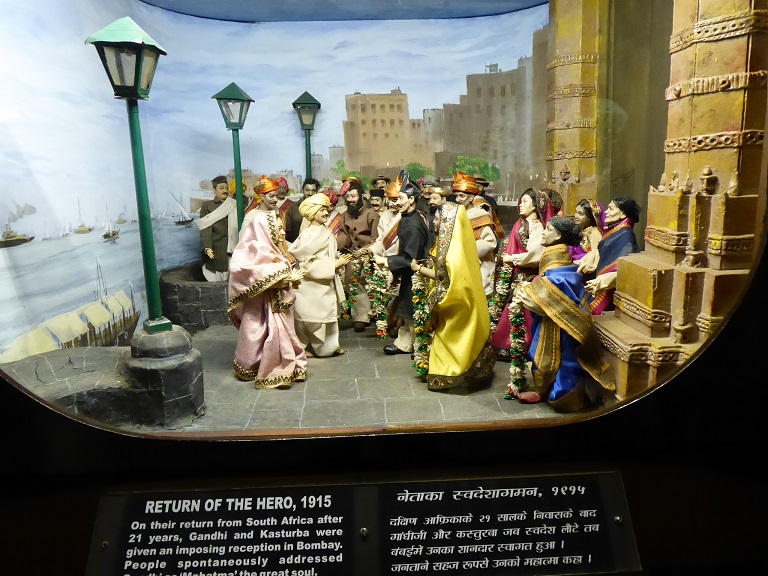
|
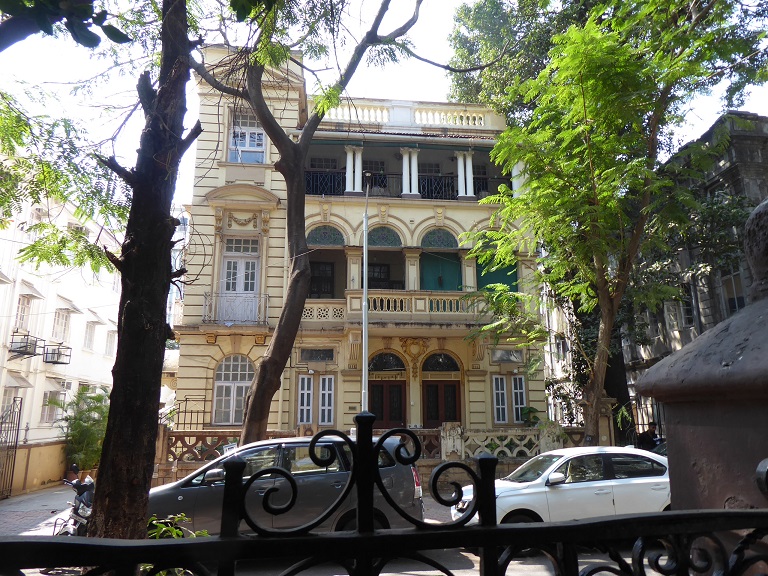
|
Mani Bhavan: This is a modest two-storied building on the Laburnum Road in the comparatively quiet locality called Gamdevi, served as Gandhiji’s Bombay head-quarters for about seventeen long and eventful years (1917-1934). It belonged to Shri Revashankar Jagjeevan Jhaveri, who was Gandhi’s friend and a host during that period. It was from Mani Bhavan that Gandhi initiated Satyagraha against Rowlatt Act and propagated the causes of Swadeshi, Khadi and Hindu-Muslim Unity. In 1955 the building was dedicated as a memorial to Gandhiji and to the very important activities of great significance he initiated from that place.
Mani Bhavan has a story to tell as it housed Gandhiji occasionally during the times when he grew in stature and strength, from an agitator to a world figure by successfully introducing satyagraha (individual as well as mass) as a new and effective weapon to fight all evil and injustice.
Once you enter the place, there is a library with the statue of the Mahatma where people offer their tributes. Then a staircase dotted with Gandhi’s pictures depicting his life leads visitors to the first floor which has a big photo gallery where photographs of his childhood till his assassination are displayed along with press clippings. The room that Gandhi used during his stay here is on the second floor – there is a glass partition and people can see through two of his spinning wheels, a book and a still preserved floor- bed. Right opposite the room there is a hall where photographs and paintings of his lifetime are on display.
|
Day 6 - Chhatrapati Shivaji Maharaj Vastu Sangrahalaya Museum
|
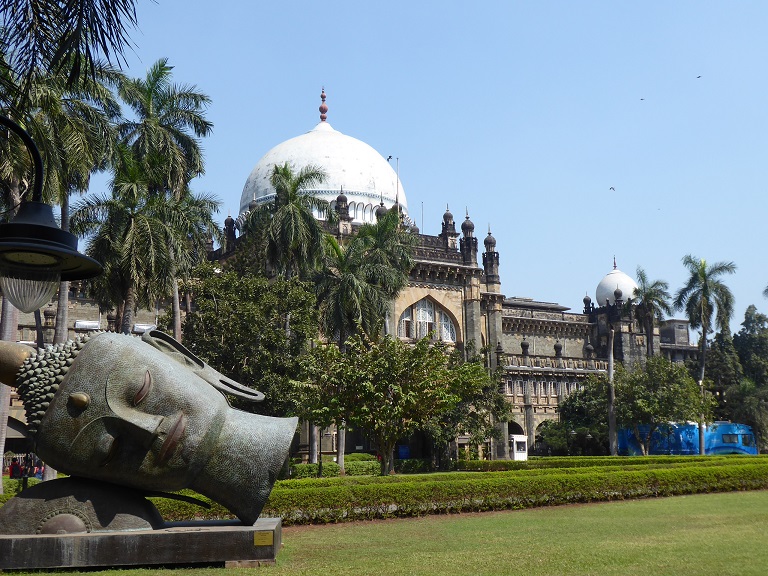
|
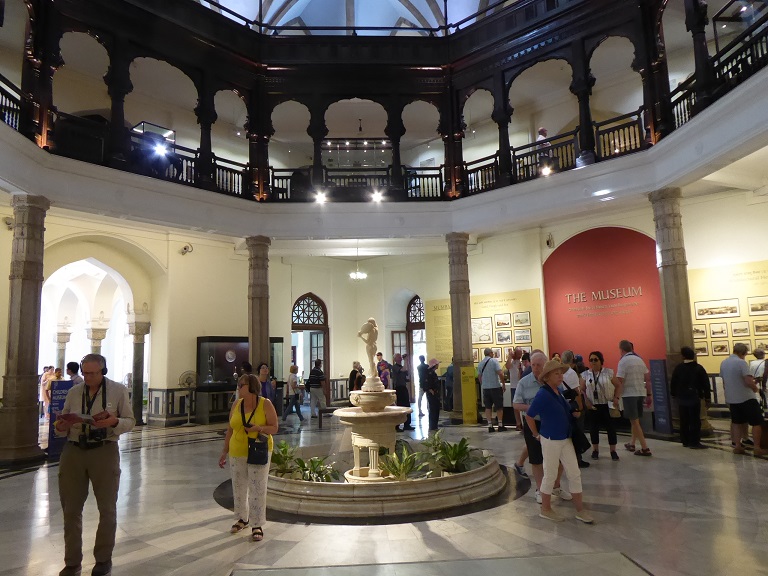
|

|
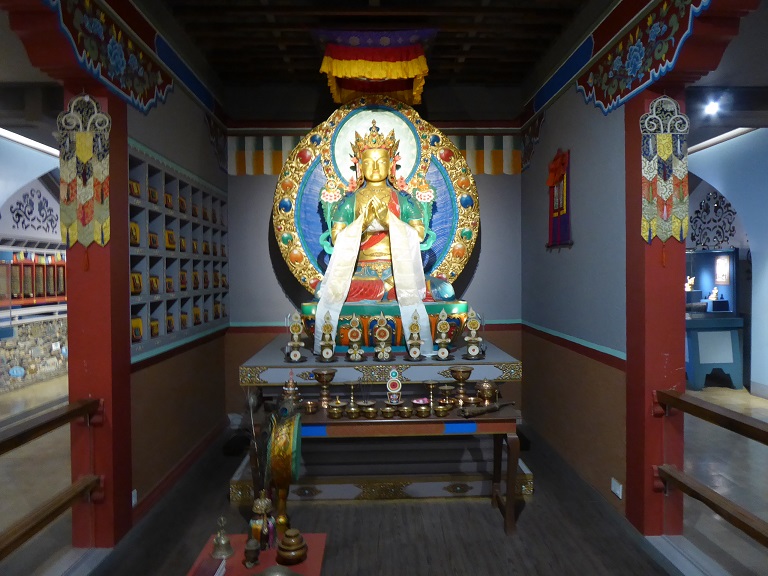
|
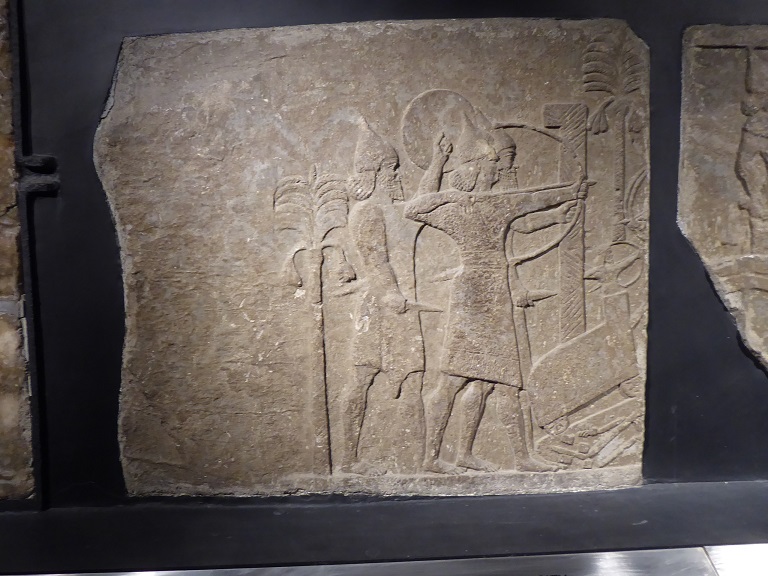
|
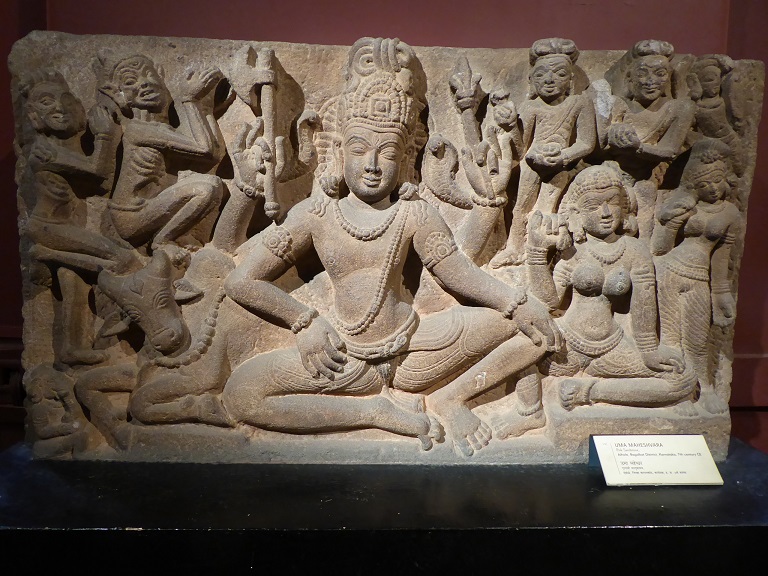
|
King Shivaji museum: The Chhatrapati Shivaji Maharaj Vastu Sangrahalaya (translation: 'King Shivaji museum'), abbreviated CSMVS and formerly named the Prince of Wales Museum of Western India, is the main museum in Mumbai, Maharashtra. It was founded in the early years of the 20th century by prominent citizens of Mumbai, with the help of the government, to commemorate the visit of George V, who was Prince of Wales at the time. It is located in the heart of South Mumbai near the Gateway of India. The museum was renamed in 1998 after Chhatrapati Shivaji Maharaj, the founder of Maratha Empire.
The building is built in the Indo-Saracenic style of architecture, incorporating elements of other styles of architecture like the Mughal, Maratha and Jain. The museum building is surrounded by a garden of palm trees and formal flower beds.
The museum houses approximately 50,000 exhibits of ancient Indian history as well as objects from foreign lands, categorized primarily into three sections: Art, Archaeology and Natural History. The museum houses Indus Valley Civilization artefacts, and other relics from ancient India from the time of the Guptas, Mauryas, Chalukyas and Rashtrakuta.
A scenic hour-long journey, strategic forts, tallest-in-Asia lighthouse. Your first stop is Fort Aguada and her Portuguese Lighthouse. Built in 1612, and on the beach shoreline of the Mandovi River. Visit Panjim, the Capital of Goa where you will explore the local market with souvenir shops. Then short drive to the Reis Magos Fort and her vantage view of Panjim City. Later visit private villa and enjoy home cooked Goan meal.
|
Day 8 - Shops and Housing along the Roads
|

|
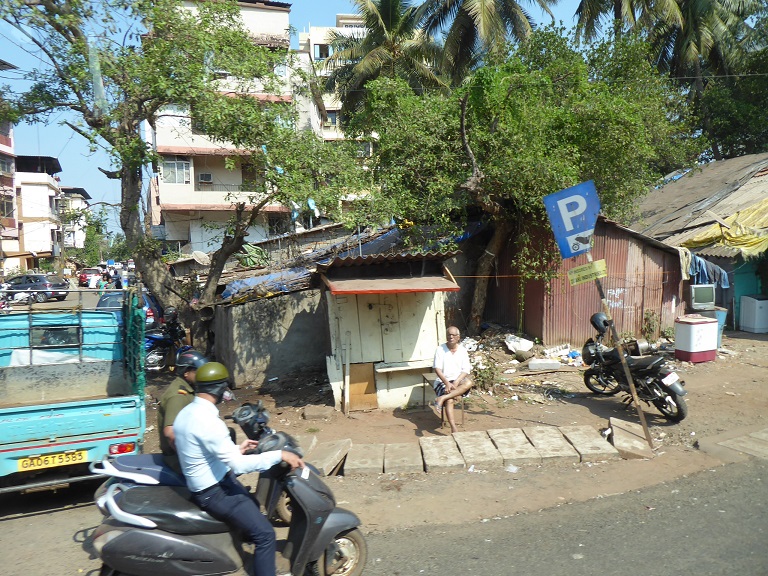
|
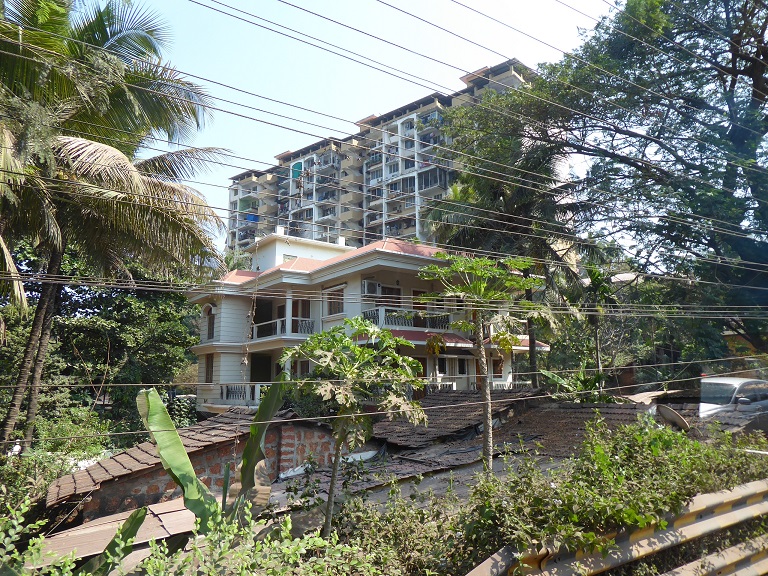
|

|
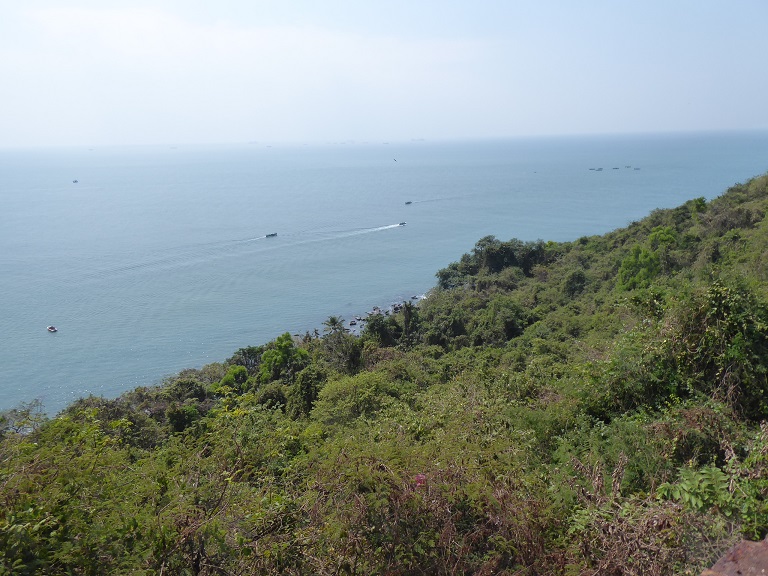
|
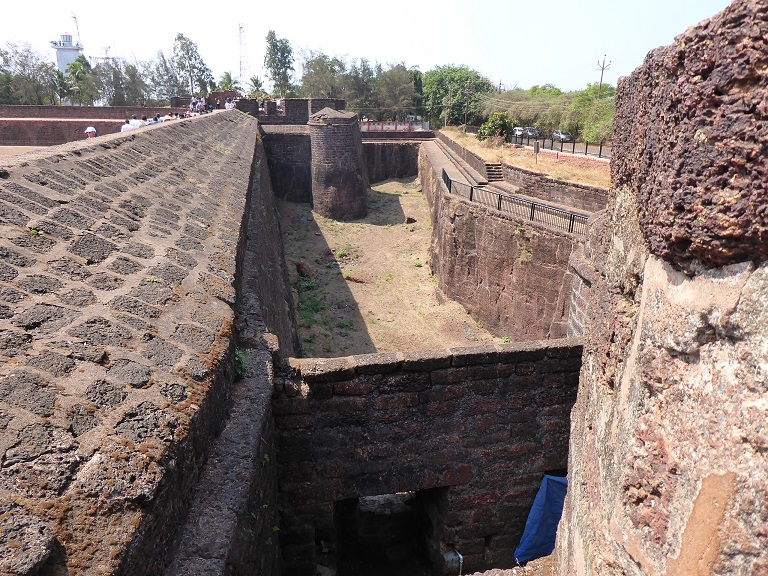
|

|

|
Fort Aguada:
The fort was constructed in 1612 to guard against the Dutch and the Marathas. It was a reference point for the vessels coming from Europe at that time. This old Portuguese fort stands on the beach south of Candolim, at the shore of the Mandovi River. It was initially tasked with defense of shipping and the nearby Bardez sub-district.
A freshwater spring within the fort provided water supply to the ships that used to stop by. This is how the fort got its name: Aguada, meaning Water. Crews of passing ships would often visit to replenish their freshwater stores. On the fort stands a four-story Portuguese lighthouse, erected in 1864 and the oldest of its kind in Asia. Built in 1612, it was once the grandstand of 79 cannons. It has the capacity of storing 2,376,000 gallons of water, one of the biggest freshwater storages of the time in whole of Asia. This fort is divided in two segments: the upper part acted as fort and watering station, while the lower part served as a safe berth for Portuguese ships. Whereas the upper part has a moat, underground water storage chamber, gunpowder room, lighthouse, and bastions, it also has a secret escape passage to use during time of war and emergency. The lighthouse at the initial stage is used to emit light once in 7 minutes.
Fort Aguada was the most prized and crucial fort of Portuguese. The fort is so large that it envelops the entire peninsula at the southwestern tip of Bardez. Built on the mouth of river Mandovi, it was strategically located and was the chief defence of Portuguese against the Dutch and Marathas.
|
Day 8 - Mahadayi/Mandovi River
|
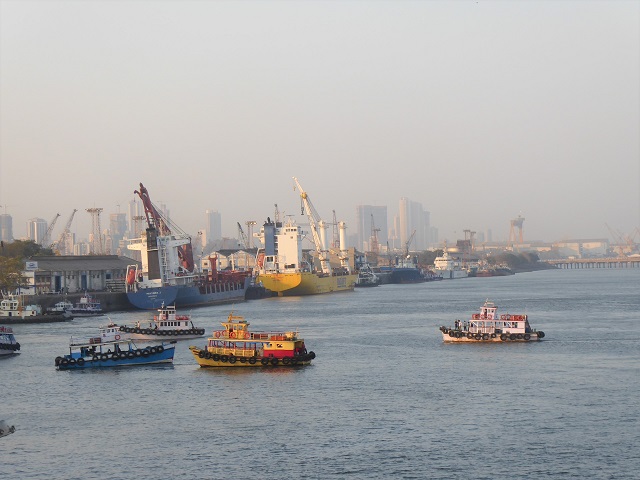
|

|

|
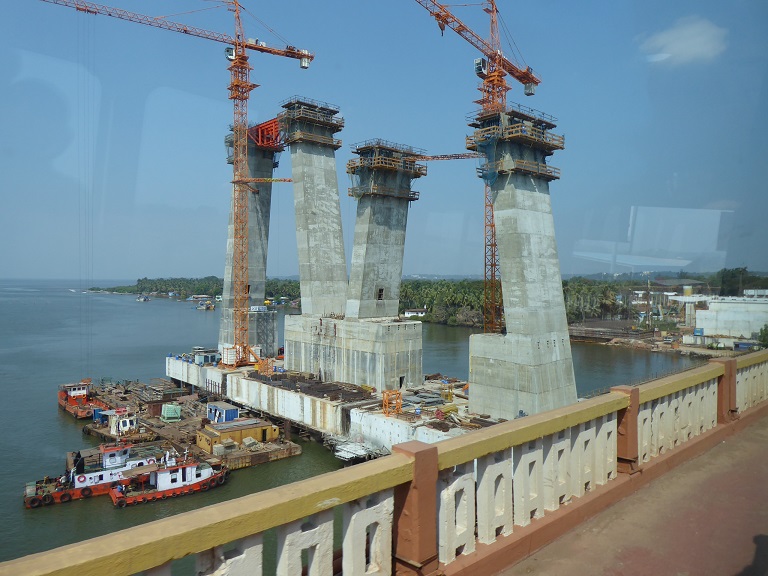
|
Mahadayi/Mandovi River:
The Mahadayi/Mandovi River, also known as Mahadayi or Mhadei river, is described as the lifeline of the Indian state of Goa. The Mandovi and the Zuari are the two primary rivers in the state of Goa. Mandovi joins with the Zuari at a common creek at Cabo Aguada, forming the Mormugao harbour. Panaji, the state capital and Old Goa, the former capital of Goa, are both situated on the left bank of the Mandovi.
The river has a length of 77 kilometres (48 miles), 29 kilometres (18 miles) in Karnataka and 52 kilometres (32 miles) in Goa. It originates from a cluster of 30 springs at Bhimgad in the Western Ghats in the Belagavi district of Karnataka. The river has total 2,032 km2 catchment area of which 1,580 km2, 375 km2 and 77 km2 catchment area are in Goa, Karnataka and Maharashtra respectively. With its cerulean waters, Dudhsagar Falls and Varapoha Falls, it is also known as the Gomati in a few places.
The Mandovi enters Goa from the north via the Sattari Taluka and from Uttara Kannada District of Karnataka near the Castle Rock Rly. Stn. The Mandovi flows through Belagavi, Uttara Kannada in Karnataka and Cumbarjua, Divar and Chorão in Goa, eventually pouring into the Arabian Sea. The river Mapusa is a tributary of the Mandovi.
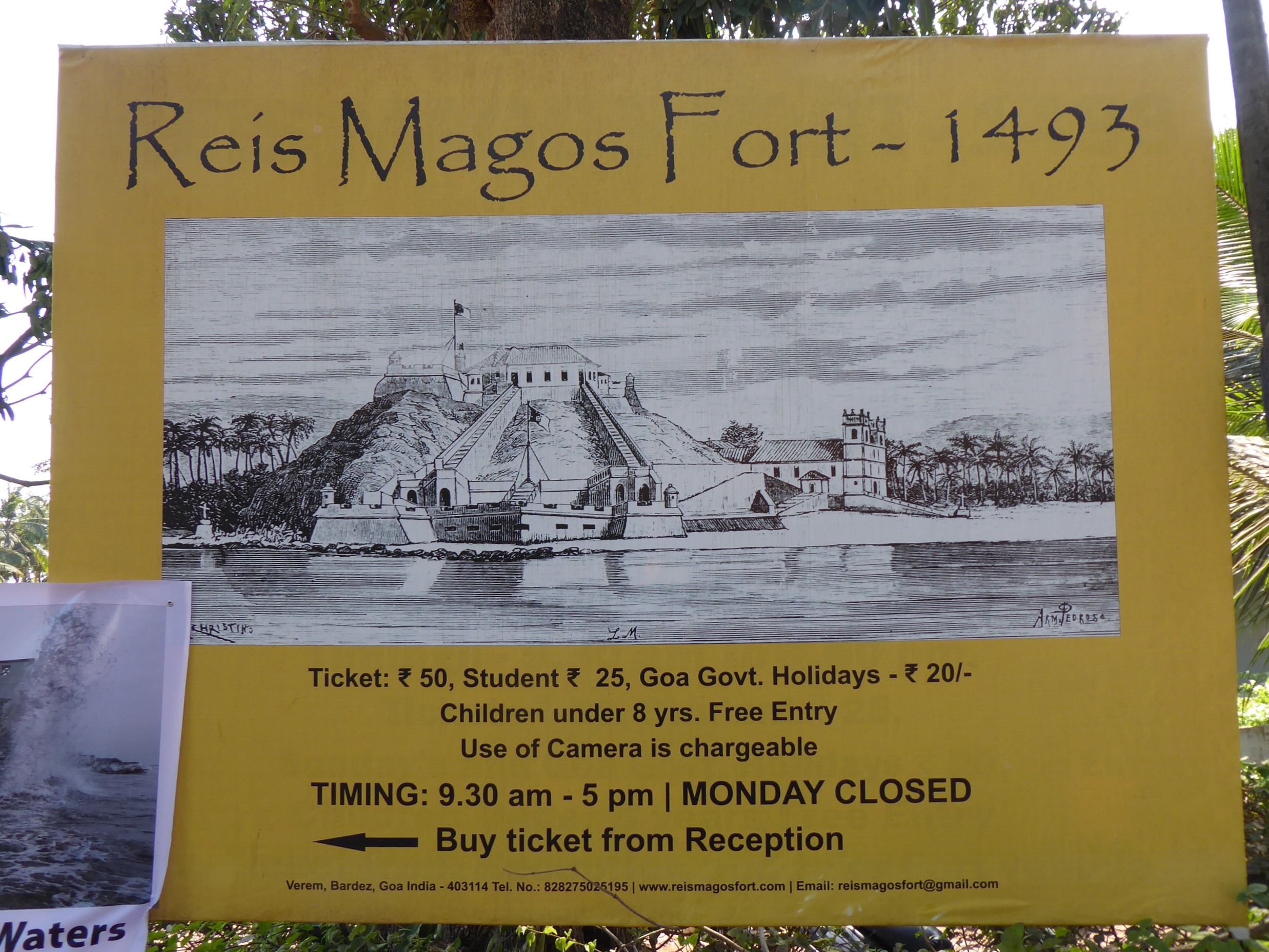
|
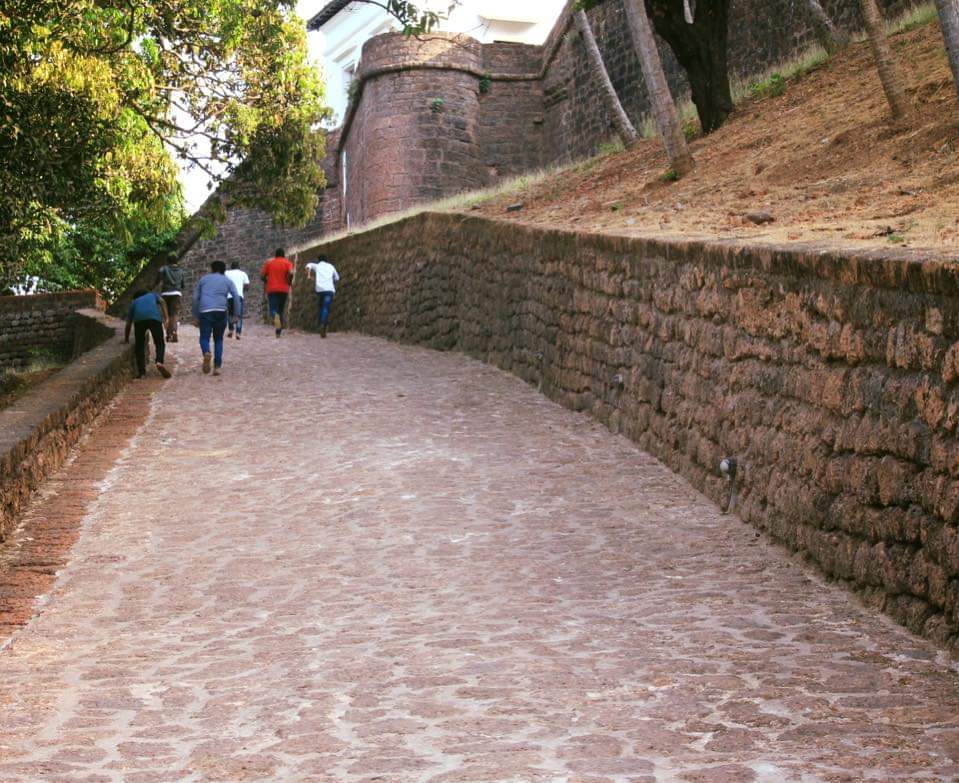
|
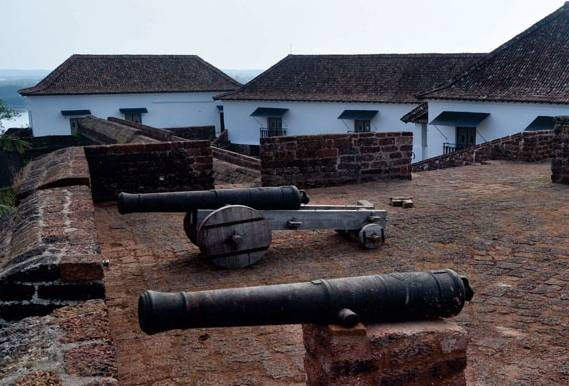
|

|
Reis Magos Fort: Predating Fort Aguada by half a century, a second, smaller fort that crowns the headland jutting into the narrowest stretch of the Mandovi, almost facing the capital city Panjim, is the Reis Magos Fort. This Fort, surrounded by sturdy laterite walls studded with typically Portuguese turrets, was erected in 1551 to protect the narrowest point at the mouth of the Mandovi estuary. It was enlarged subsequently on different occasions and finally re-erected in 1707. The fort formerly accommodated viceroys and other dignitaries newly arrived from, or en route to, Lisbon, and in the early eighteenth century proved a linchpin in the wars against the Hindu Marathas, who were never able to take it. The bastion was used as a prison. Though far inferior in size to the fortress of Mormugao, yet standing on an eminence, it commands a splendid view all around. It is in a good state of preservation and is defended by 33 guns and accommodation for a small garrison. Towards the east, at a little distance from it, flows a spring with abundance of excellent water, while at its base rises the church of the Reis Magos, ascended by a beautiful flight of stairs.
This edifice was built on the ruins of a pagoda in 1550 by the Franciscans, with the sum allotted to them by the Government, and bears a crown on its façade, and the royal arms on its sanctuary and other places. The pavement is dotted with inscriptions, the most important of which, found in the sanctuary, indicated the spot enclosing the remains of Dom Luís de Ataíde, Count of Athoughia, who twice held the position of Viceroy of Portuguese India and Goa. This Fort stands on the north bank of the Mandovi at Reis Magos, and is very much visible from the Panjim side of the Mandovi river. It was used as a residence for viceroys and later converted to a fortress. It was occupied briefly between 1798-1813 by the British Army. It was subsequently abandoned by the military and served as a prison until 1993.
Opposite the city of Panjim, lies the village of Reis Magos located on the northern bank of the Mandovi River. The village is famous for two monuments- The Reis Magos Fort and The Reis Magos Church-the first church in Bardez. Erected in the year 1551 it was mostly accommodated by viceroys and other dignitaries who arrived in Goa. It is now owned by the Government of Goa and listed under the Goa Ancient Monuments and Archaeological Sites and Remains Act, and is the oldest fort in Goa.
Afternoon Buffet:
We had a great lunch with local flavors and since it was just warm enough, I had a beer, very tasty if I do say so. Plus great entertainment, all in all a good day!
I like it when there is a lunch or dinner to taste test the local food and beverages!
|
Day 8 - Tour of Downtown Panaji
|
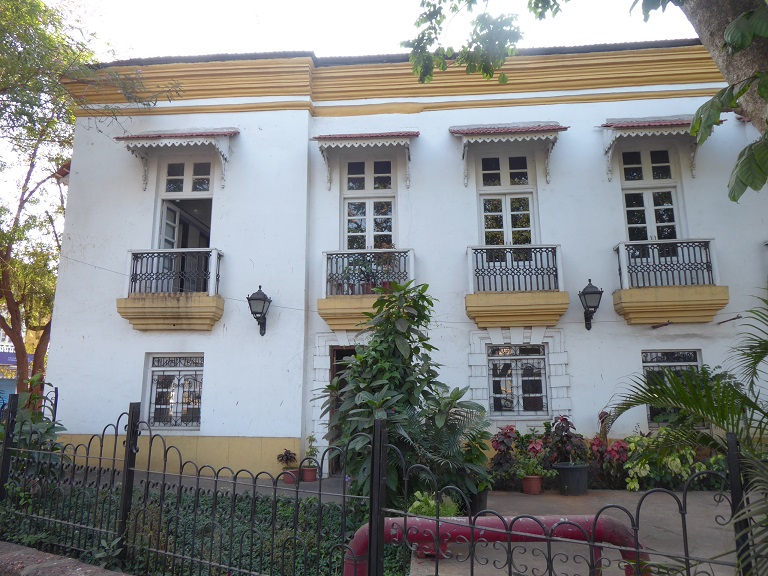
|

|
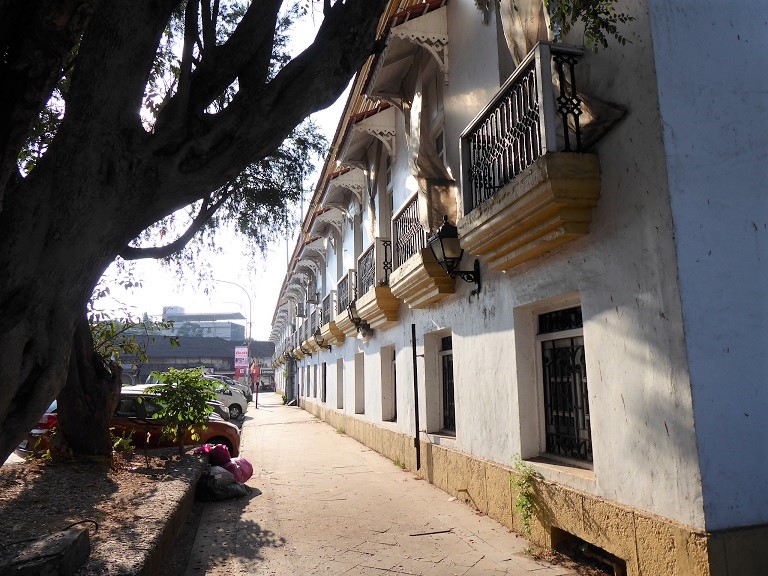
|
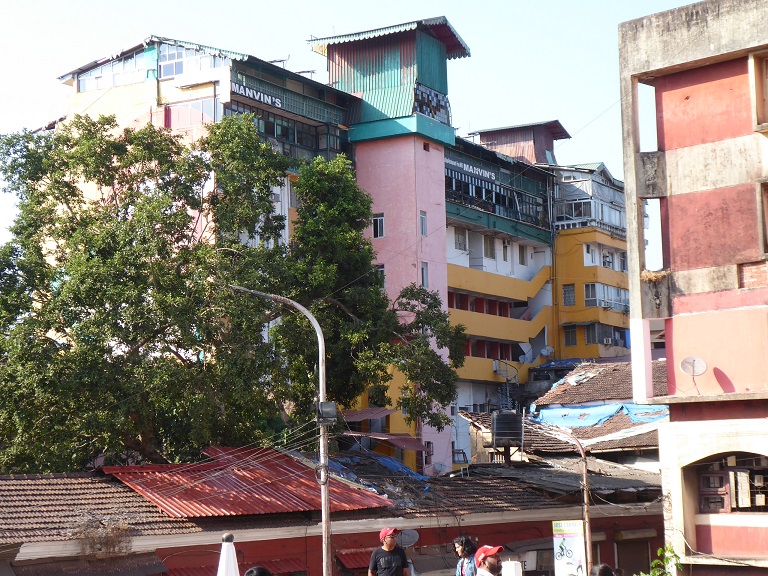
|
Panaji:
Panaji was formerly named Panjim, and is the capital of the Indian state of Goa and the headquarters of North Goa district. It lies on the banks of the Mandovi River estuary in the Ilhas de Goa sub-district (taluka). With a population of 114,759 in the metropolitan area, Panjim is Goa's largest urban agglomeration, ahead of Margão and Vasco da Gama.
Panjim has terraced hills, concrete buildings with balconies and red-tiled roofs, churches, and a riverside promenade. There are avenues lined with gulmohar, acacia and other trees. The baroque Our Lady of the Immaculate Conception Church is located overlooking the main square known as Praça da Igreja. Panjim has been selected as one of hundred Indian cities to be developed as a smart city under the Smart Cities Mission.
Panjim was built with stepped streets and a seven kilometre long promenade on a planned grid system after the Portuguese relocated the capital from Velha Goa in the 17th century. It was elevated from a town to a city on 22 March 1843 making it the oldest civic institution in Asia (175 years).
|
Day 8 - Immaculate Conception Church
|
Our Lady of the Immaculate Conception Church:
The colonial Portuguese Baroque style church was first built in 1541 as a chapel on a hill side overlooking the city of Panjim. It was eventually replaced by a larger church in the 1600s as part of Portuguese Goa's religious expansion.
This church houses the ancient bell that was removed from the Augustinian ruins of the Church of Our Lady of Grace in the once famed city of Old Goa. This bell is considered to be the second largest of its kind in Goa, surpassed only by the Golden Bell which resides in the Cathedral in Old Goa.
|
Day 9 - At Sea - Maritini Bar
|
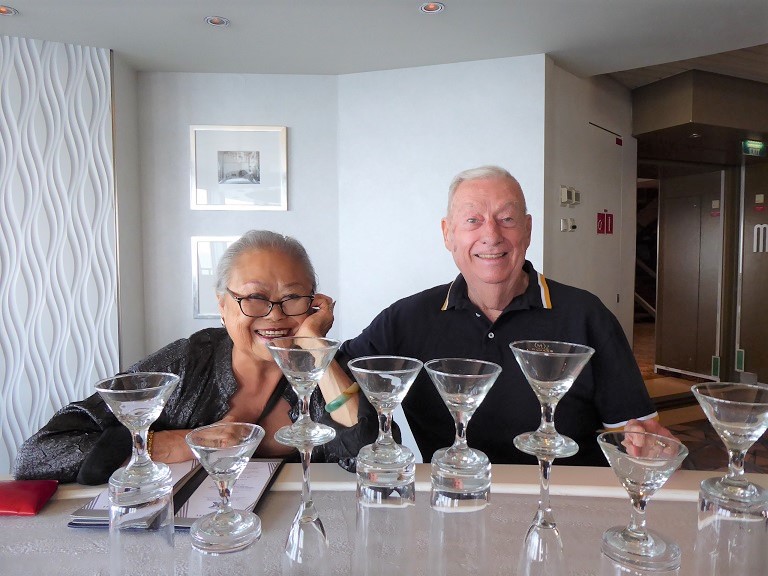
|
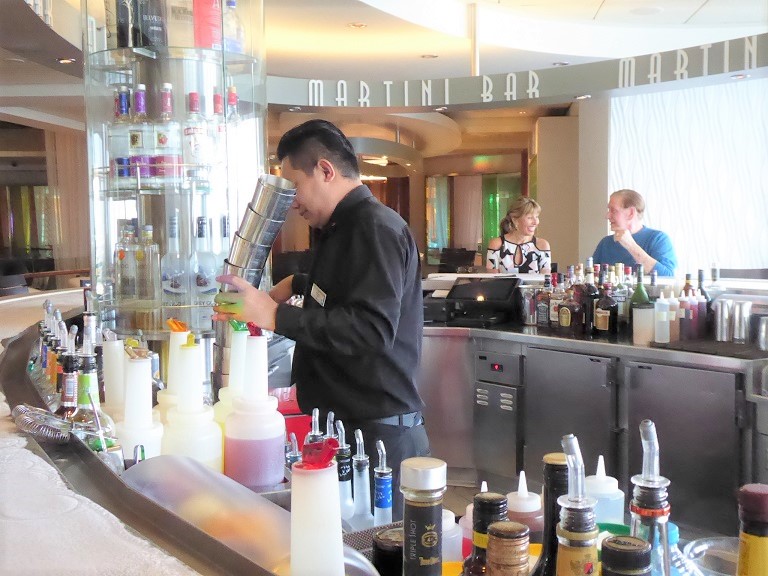
|
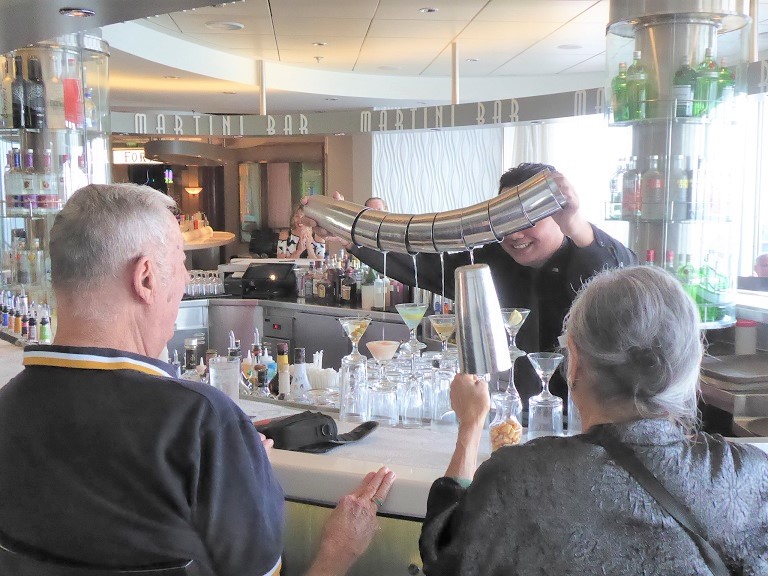
|

|
We decided to as usual, try the special martini setup of multiple mixtures of beverages. It cost around $28 for six martinis but the bar tenders found out we had been to Indonesia and all three were from there. One especially liked us as he lives on Komoto Island and we went there and toured the jungle. They decided we should get eight (8) martinis in stead of six.
Check out the bartender, he put filled eight shakers with the eight different martinis, shook them and stacked them on top of each other. He then tipped the entire stack of shakers and poured all eight martinis, filling each one to the top and never spilling any of the martinis. We were impressed. the rest of the trip, when ever we passed the martini bar or saw the bartender from Komoto, he stuck out his tounge like he was a dragon and we all had a good laugh. We did go back several times as the martinis were very big and tasty!
Note: The bartender gave Virginia a shaker on a long spoon and told her it was a bell and she should ring it as loud as possible to attrack attention to the pouring of the martinis. She did a fabulous job!
A Kochi (also known as Cochin) is a city in southwest India's coastal Kerala state. It has been a port since 1341, when a flood carved out its harbor and opened it to Arab, Chinese and European merchants. Sites reflecting those influences include Fort Kochi, a settlement with tiled colonial bungalows and diverse houses of worship. Cantilevered Chinese fishing nets, typical of Kochi, have been in use for centuries.
|
Day 10 - Boating on the Harbor
|
|
Day 10 - Mattancherry Palace
|
Mattancherry Palace: The Palace was built and presented as a token of appreciation by the Portuguese to the Raja of Kochi, Verra Kerala Varma, in 1555. The Dutch carried out renovations and created extensions in 1663, hence it also called the Dutch Palace. The double storeyed palace has the architectural style of the Portuguese but it follows the design patterns of Kerala temple architecture, which can be seen in the wooden balconies and the sloping roof. Today, the palace serves as an art gallery showcasing some of India’s best art murals and paintings, the star attractions being the murals depicting scenes from the Hindu epic Ramayana and other Puranic legends in elaborate detail.
|
Day 10 - Shore Line Activities
|
|
Day 10 - Cantilevered Chinese Nets
|
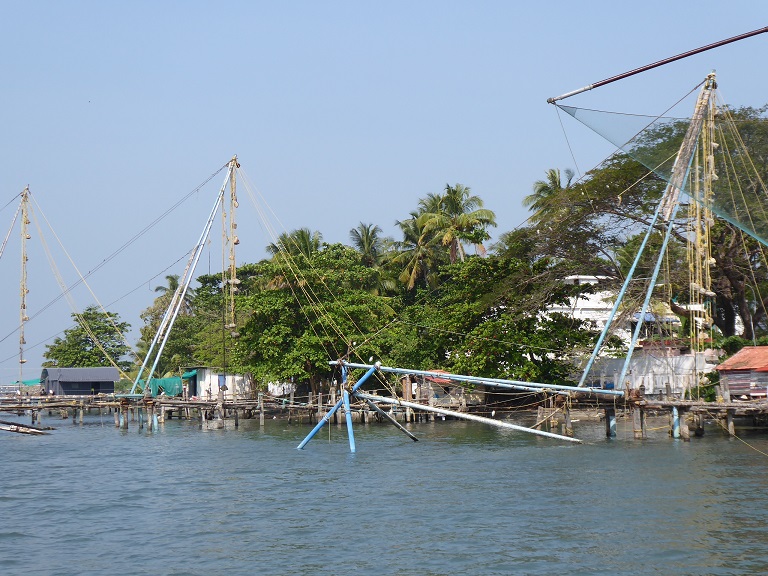
|
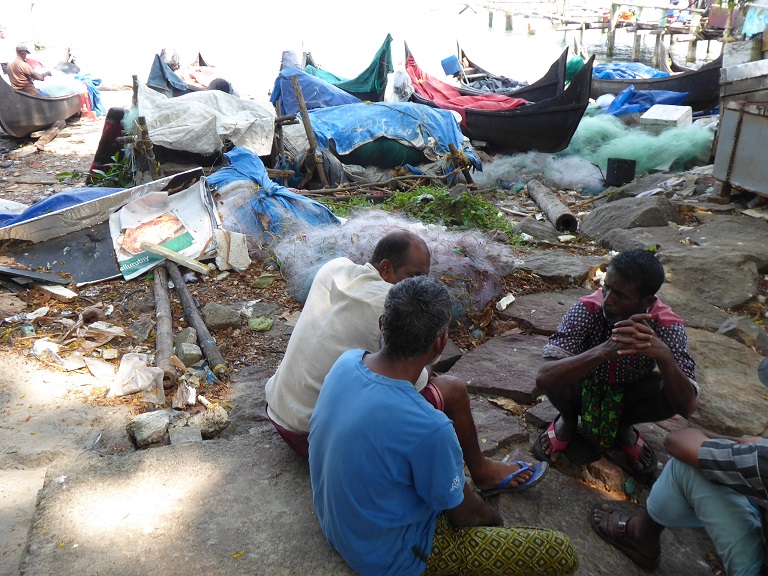
|

|
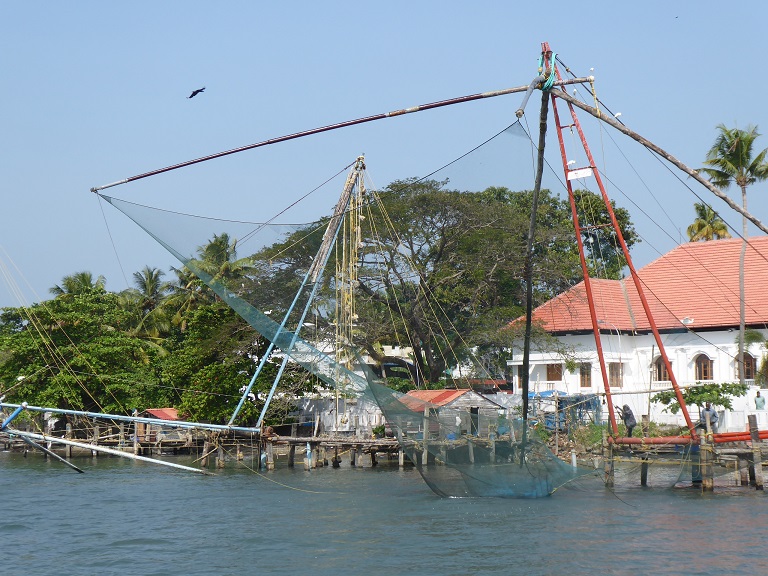
|
Cheena vala: Chinese fishing nets (Cheena vala) are a type of stationary lift net in India. They are fishing nets that are fixed land installations for fishing. While commonly known as "Chinese fishing nets" in India, the more formal name for such nets is "shore operated lift nets". Huge mechanical contrivances hold out horizontal nets of 20 m or more across. Each structure is at least 10 m high and comprises a cantilever with an outstretched net suspended over the sea and large stones suspended from ropes as counterweights at the other end. Each installation is operated by a team of up to six fishermen. While such nets are used throughout coastal southern China and Indochina, in India they are mostly found in the Indian cities of Kochi and Kollam, where they have become a tourist attraction. This way of fishing is unusual in India and almost unique to the area, as it was introduced by Chinese explorers who landed there in the 14th century. Indeed, one interpretation of the city name Kochi is ‘co-chin', meaning ‘like China.’
The system is sufficiently balanced that the weight of a man walking along the main beam is sufficient to cause the net to descend into the sea. The net is left for a short time, possibly just a few minutes, before it is raised by pulling on ropes. The catch is usually modest: a few fish and crustaceans, which may be sold to passers-by within minutes.
Rocks, each 30 cm or so in diameter, are suspended from ropes of different lengths. As the net is raised, some of the rocks one-by-one come to rest on a platform thereby keeping everything in balance.
Each installation has a limited operating depth. Consequently, an individual net cannot be continually operated in tidal waters. Different installations will be operated depending on the state of the tide.
The nets may have been introduced by the Chinese explorer Zheng He.
|
Day 10 - A Hindu Play with Face and Hand Postures
|
Kathakali: This is one of the nine classical dances of India and has its origins in Kerala. It is well known for its colourful and fascinating costumes. The dance presents themes derived from the Hindu epics Ramayana, Mahabharata and many others. Kochi’s Kerala Kathakali Centre runs performances every day and also provides opportunities to watch the artists apply their makeup and offers training programs in the classical dances too.
|
Created on: 2017.02.28 |
|
 |
|
Updated on: 2020.02.28 |






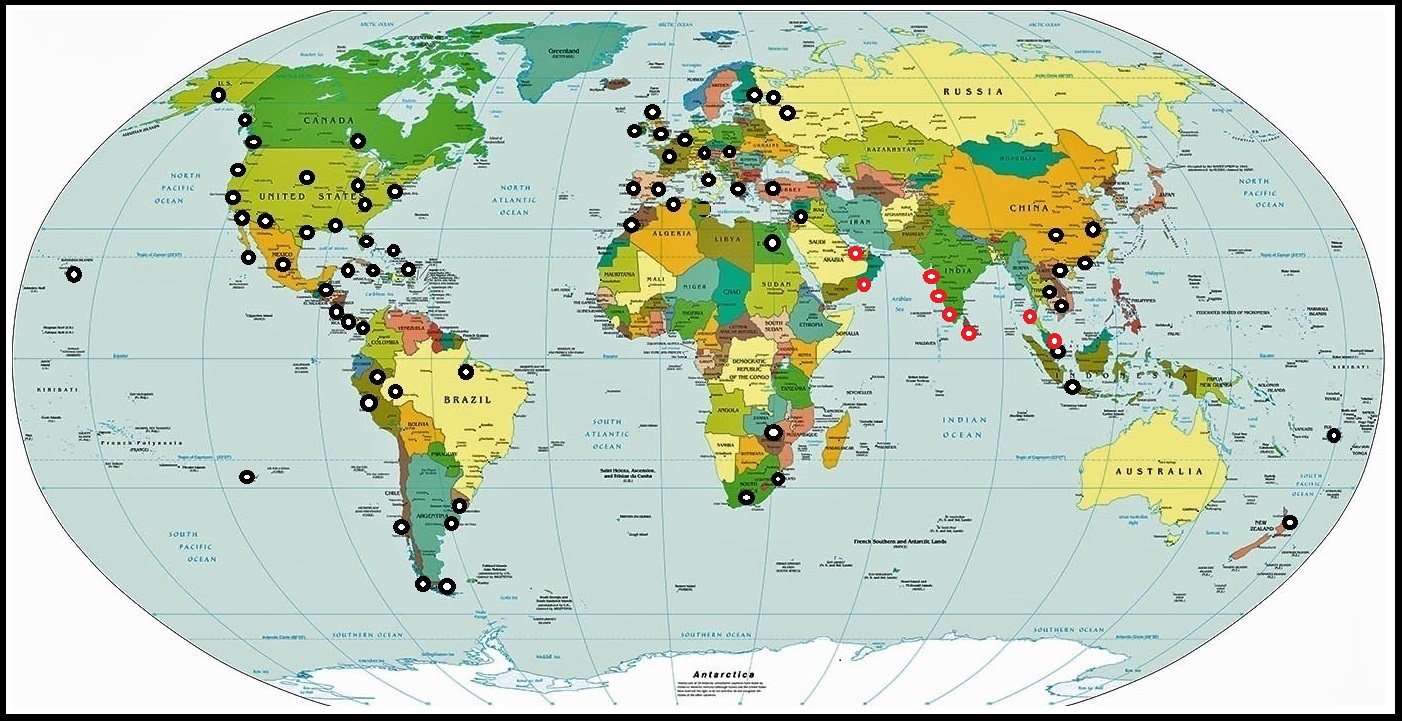
Virginia suggested we take a cruise to celebrate my 80th birthday in the MIddle East and India.









